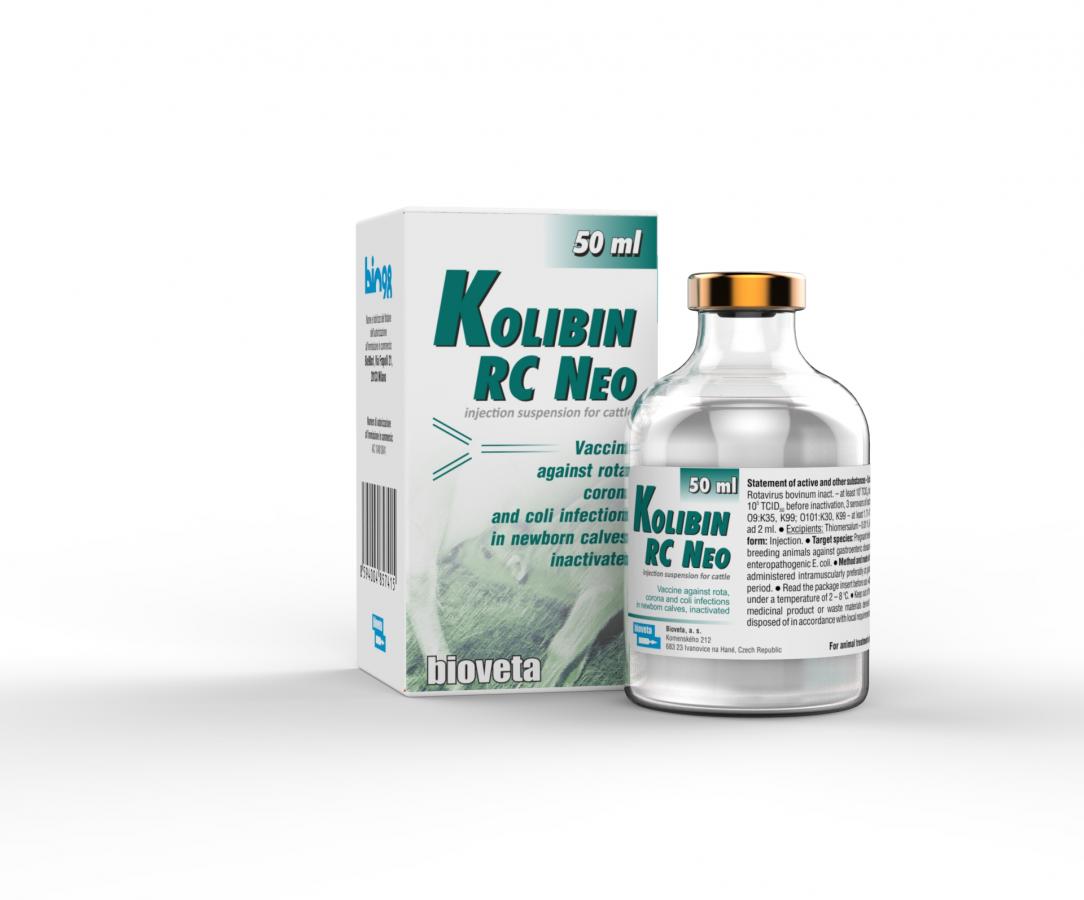Kolibin RC Neo, injection emulsion, for cattle
Homepage Products Veterinary products Kolibin RC Neo, injection emulsion, for cattle
Inactivated vaccine against rota, corona and E. coli infections in newborn calves.
| type of preparative: | Vaccines |
|---|---|
| target species animals: | Cattle |
| Registered | |
Pharmaceutical form
Emulsion for injection.
Composition
Inactivated bovine rotavirus, strain TM-91 RP ≥ 1*
Inactivated bovine coronavirus, strain C-197 RP ≥ 1*
Inactivated E. coli - 3 serovars of enteropathogenic strains – O8:K35, K99; O9:K35, K99; O101:K30, K99 RP ≥ 1*
*Relative potency established in guinea pigs by serological method (ELISA) in comparison with standard vaccine with minimal content of antigen.
Indication
Active immunisation of pregnant heifers and cows for the purpose of passive immunisation of calves against gastro-enteric diseases caused by rotavirus, coronavirus and enteropathogenic E. coli strains.
Onset of immunity: In calves fed from mothers and in calves fed with colostrum collected from the vaccinated cows the passive protection starts when feeding begins.
Duration of immunity: The calves fed from mothers are protected against the infection by colostral and lactogenic immunity for the first 2–4 weeks of life.
Dosage, application and vaccination scheme
Vaccine Administration:
Vaccination dose – 2 ml.
The vaccine is administered intramuscularly – preferably at gluteal region.
Immunity inducing: The pregnant heifers (or still unvaccinated cows) are vaccinated twice in the interval of 21 days, namely, 7–5 weeks and 4–2 weeks before the first expected calving.
Revaccination is performed by one dose, namely, before each next calving.
Feeding with Colostrum:
In order to ensure the effective prevention of calves against infection, the gastrointestinal tract of calves shall be saturated with colostrum and milk obtained from the vaccinated cows for the first 2–3 weeks of their life. A calf shall drink the adequate colostrum volume obtained from the vaccinated cows within 6 hours after its birth.
Taking into account that a calf is not fed with its mother, colostrum (and later milk) should be collected from the vaccinated cows during the first 6–8 milking; the colostrum and milk obtained as above should be stored either frozen or (for not later than 14 days) chilled to the temperature between 2 °C and 8 °C. The daily dose of colostrum (and, later, milk) for a calf is 2.5–3.5 l daily for at least the first two weeks of life.
The optimum protection of calves against the infection can be reached using the method as mentioned above if all cows in the herd are vaccinated.
The vaccine is intended for vaccination of the pregnant breeding animals.
Storage
Store in a refrigerator (2 °C–8 °C).
Protect from frost.
Protect from light.
Withdrawal period
Zero days.
Shelf life
Shelf life of the veterinary medicinal product as packaged for sale: 2 years.
Shelf life after first opening the immediate packaging: 10 hours.
Package
2 x 2 ml, 10 x 2 ml, 20 x 2 ml, 1 x 10 ml, 5 x 10 ml, 10 x 10 ml, 1 x 50 ml, 12 x 50 ml, 24 x 50 ml, 1 x 100 ml, 12 x 100 ml, 20 x 100 ml.
Not all pack sizes may be marketed.










